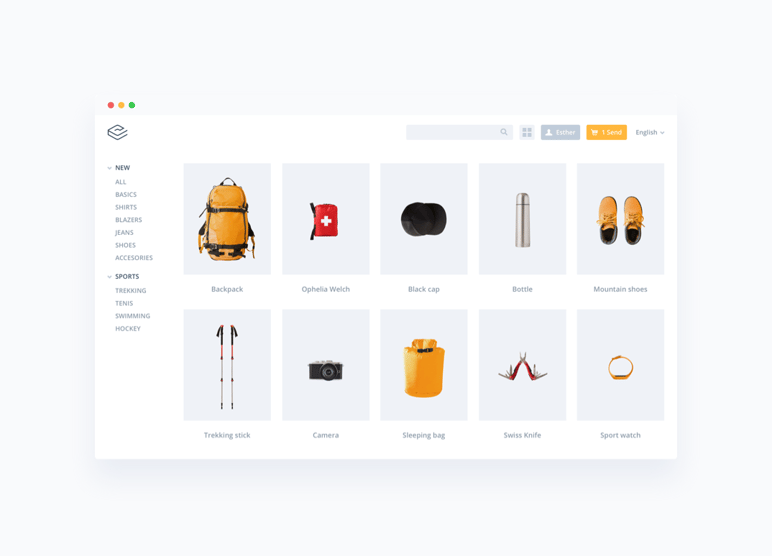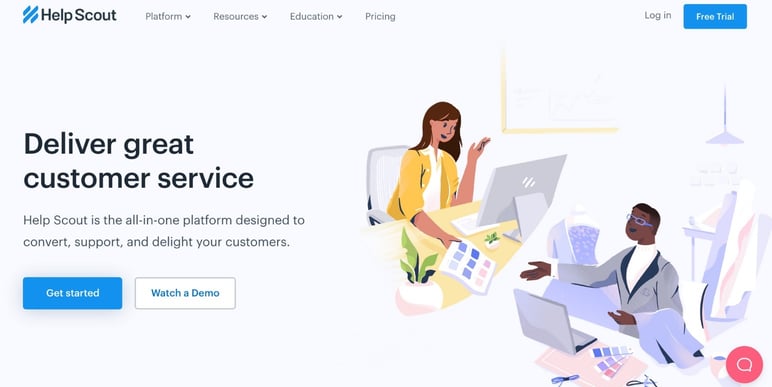
What are the challenges for B2B companies?
While there are numerous similarities between B2B and B2C customers, it’s been too easy for sales and marketing departments in the past to overlook the differences and apply a one-size-fits-all approach.
The reality is that while the needs of B2B and B2C customers are similar, they both pose different challenges to businesses. Therefore strategies must be applied with different objectives, rhythms and factors in mind.
The main challenges facing B2B companies selling goods online include:
-
- Implementing positive improvements for customers
- Tracking documents and leads and analyzing metrics
- Delivering first class treatment to potential clients
- Gathering customer feedback
- Incorporating innovative technology

The B2B customer profile in recent years
If your company has struggled in the B2B sector by applying the same strategy as you apply to your B2C customers, it might be worth considering the differences between them. A potential customer searching for software for their company to use would be an entirely different customer to one who was seeking a teapot for their kitchen.
With this in mind, it’s important to refine your view of your typical B2B customer and what they are expecting of your brand. This might include:
- Customized channels: portals, web pages and apps that adapt content to specific needs
- Clear and anticipated costs: services and products that explicitly state the costs and expected return
- Interactivity: innovative technology that shows much more than a catalog of technical data
- Additional contact options: Phone number, email address and more options for instant consultation with a customer service or support.
→ Keep reading: 5 ecommerce trends for your strategy
B2B sales trends in 2022
With even a quick look at some of the current trends in B2B ecommerce, it’s interesting to note how manufacturers and suppliers are having to adapt both a practical and creative mindset in order to meet the increased expectations of customers. Here are just a few of the key areas that companies are seeing the rewards for focussing on.
Multichannel strategy
The integration of products and services into multiple channels is as important for B2B online sales as it is in B2C. When businesses implement multichannel and omnichannel strategies, this helps simplify and shorten the process for buyers. Your customers are presented with the relevant content no matter where they begin their search, helping to improve the likelihood of a purchase.
A multichannel approach is a vital part of any B2B ecommerce strategy in 2022, and is not only applied in marketing, but also in the sales process.
→ Don't miss this: The best tool for a multichannel strategy
Centralization
One of the main issues facing B2B companies is that they’re often utilising a number of softwares and tools throughout their workflow. This can create confusion between departments and result in the duplication of tasks, as well as the masking of errors with more issues able to slip through the gaps.
The solution many businesses are coming to realize in 2022 is to simplify your processes with a PIM system. This PIM allows you to manage product information, databases and resources, while providing access (or limiting access) to teams and employees at different stages of the product process.
Both your marketing and sales teams will appreciate the benefit of introducing a PIM to your workflows. This reference source of company and catalog data will help to inform decisions and eliminate errors or duplication of tasks or information entry. One of the most popular B2B ecommerce trends in 2022, taking the digital leap with a PIM is essential to save costs, streamline your output and drive sales.
→ Discover if your company needs a PIM solution

Video and Multimedia Use
As previously mentioned, businesses are looking at new avenues and approaches to market themselves to potential clients.
The B2B buyer is tired of listening. They want to see and experience things for themselves. 70% of B2B shoppers research brands by watching videos, and Google already places more value on content that uses a combination of text and video than text alone.
Whether in public channels (your website or marketplaces) or in presentations, demo videos are a vital part of the B2B sales process, and cutting-edge technology is increasingly being demanded by customers. Using videos or interactive content with augmented or virtual reality is more than a gimmick: it is the perfect means of presenting your product or service whether in person or from a distance, without having to carry around samples or hefty product catalogs.
This use of videos reiterates the need for you to have your digital data in order. A PIM enables you to ensure your digital catalog is kept up to date at all touchpoints, helping you manage new product resources without errors.

Data and content quality
One of the most common B2B ecommerce trends is companies starting to take more pride in the quality of their content.
Data analysis
The metrics used to measure the effectiveness of your content should be useful for your strategy, not simply vanity metrics. Companies are putting less emphasis on the number of new visitors to the website, but focussing instead on the number of them that become leads and why (or why don’t) they convert.
Product content
Poor content quality can significantly impact your conversions if your customers are unable to find or rely on the information they are seeking. Fortunately, there is a way to resolve this, and this is becoming more of a focus for B2B companies in 2022. Adding technical specifications and detailing the solution that your product provides in its description are just a few of the ways to do this.
Marketing content
Rather than just quantity, you should focus on quality content that’s interesting, useful and original. This isn’t just true for the product description, but also for your email, communications and ads that are consistent with your demos and landing pages. One of the developing trends for B2B ecommerce is developing the quality of the following assets:
- Success stories
- Videos
- Infographics
- Ebooks
- FAQ
- Online forums and community
- Tutorials and learning guides
- User manuals
- Useful documentation
- Internal search engine for themes and categories
All of these challenges can be easily addressed with the application of a product management software such as Sales Layer’s PIM.
→ A real story: How IKEA increased conversions with product data
Conclusion
These were just a few of the trends we’re seeing across B2B sales and marketing in 2022 as companies adapt to the growing and rapidly changing landscape. One thing remains consistent, however, and that’s the ease with which a PIM system will allow you to enhance the efficiency and quality of your product information.
Get started today and try the Sales Layer PIM for 30 days for free.




.png?width=520&name=Blog%20Partner%20(1).png)




